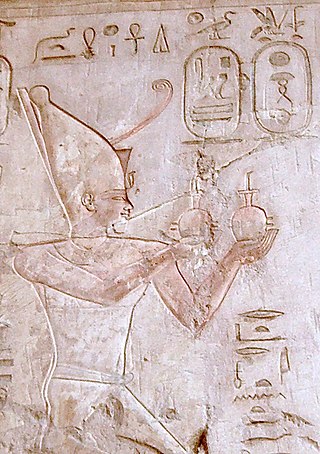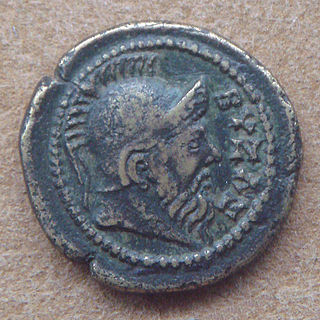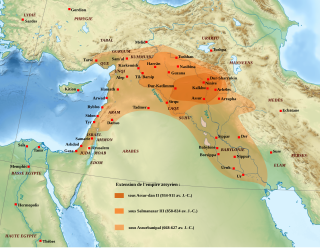Births
| | This section is empty. You can help by adding to it. (September 2013) |
| Millennium: | 1st millennium BC |
|---|---|
| Centuries: | |
| Decades: | |
| Years: |
| 663 BC by topic |
| Politics |
|---|
| Categories |
| Gregorian calendar | 663 BC DCLXIII BC |
| Ab urbe condita | 91 |
| Ancient Egypt era | XXVI dynasty, 2 |
| - Pharaoh | Psamtik I, 2 |
| Ancient Greek era | 29th Olympiad, year 2 |
| Assyrian calendar | 4088 |
| Balinese saka calendar | N/A |
| Bengali calendar | −1255 |
| Berber calendar | 288 |
| Buddhist calendar | −118 |
| Burmese calendar | −1300 |
| Byzantine calendar | 4846–4847 |
| Chinese calendar | 丁巳年 (Fire Snake) 2035 or 1828 — to — 戊午年 (Earth Horse) 2036 or 1829 |
| Coptic calendar | −946 – −945 |
| Discordian calendar | 504 |
| Ethiopian calendar | −670 – −669 |
| Hebrew calendar | 3098–3099 |
| Hindu calendars | |
| - Vikram Samvat | −606 – −605 |
| - Shaka Samvat | N/A |
| - Kali Yuga | 2438–2439 |
| Holocene calendar | 9338 |
| Iranian calendar | 1284 BP – 1283 BP |
| Islamic calendar | 1323 BH – 1322 BH |
| Javanese calendar | N/A |
| Julian calendar | N/A |
| Korean calendar | 1671 |
| Minguo calendar | 2574 before ROC 民前2574年 |
| Nanakshahi calendar | −2130 |
| Thai solar calendar | −120 – −119 |
| Tibetan calendar | 阴火蛇年 (female Fire-Snake) −536 or −917 or −1689 — to — 阳土马年 (male Earth-Horse) −535 or −916 or −1688 |
The year 663 BC was a year of the pre-Julian Roman calendar. In the Roman Empire, it was known as year 91 Ab urbe condita . The denomination 663 BC for this year has been used since the early medieval period, when the Anno Domini calendar era became the prevalent method in Europe for naming years.
| | This section is empty. You can help by adding to it. (September 2013) |
| | This section is empty. You can help by adding to it. (September 2013) |

Assyria was a major ancient Mesopotamian civilization which existed as a city-state from the 21st century BC to the 14th century BC, then to a territorial state, and eventually an empire from the 14th century BC to the 7th century BC.

The year 656 BC was a year of the pre-Julian Roman calendar. In the Roman Empire, it was known as year 98 Ab urbe condita. The denomination 656 BC for this year has been used since the early medieval period, when the Anno Domini calendar era became the prevalent method in Europe for naming years.

The year 648 BC was a year of the pre-Julian Roman calendar. In the Roman Empire, it was known as year 106 Ab urbe condita. The denomination 648 BC for this year has been used since the early medieval period, when the Anno Domini calendar era became the prevalent method in Europe for naming years.

The year 667 BC was a year of the pre-Julian Roman calendar. In the Roman Empire, it was known as year 87 Ab urbe condita. The denomination 667 BC for this year has been used since the early medieval period, when the Anno Domini calendar era became the prevalent method in Europe for naming years.
This article concerns the period 669 BC – 660 BC.
The year 664 BC was a year of the pre-Julian Roman calendar. In the Roman Empire, it was known as year 90 Ab urbe condita. The denomination 664 BC for this year has been used since the early medieval period, when the Anno Domini calendar era became the prevalent method in Europe for naming years.
The year 668 BC was a year of the pre-Julian Roman calendar. In the Roman Empire, it was known as year 86 Ab urbe condita. The denomination 668 BC for this year has been used since the early medieval period, when the Anno Domini calendar era became the prevalent method in Europe for naming years.

Ashurbanipal was the king of the Neo-Assyrian Empire from 669 BC to his death in 631. He is generally remembered as the last great king of Assyria. Ashurbanipal inherited the throne as the favored heir of his father Esarhaddon; his 38-year reign was among the longest of any Assyrian king. Though sometimes regarded as the apogee of ancient Assyria, his reign also marked the last time Assyrian armies waged war throughout the ancient Near East and the beginning of the end of Assyrian dominion over the region.
The year 627 BC was a year of the pre-Julian Roman calendar. In the Roman Empire, it was known as year 127 Ab urbe condita. The denomination 627 BC for this year has been used since the early medieval period, when the Anno Domini calendar era became the prevalent method in Europe for naming years.
The year 644 BC was a year of the pre-Julian Roman calendar. In the Roman Empire, it was known as year 110 Ab urbe condita. The denomination 644 BC for this year has been used since the early medieval period, when the Anno Domini calendar era became the prevalent method in Europe for naming years.

Wahibre Psamtik I was the first pharaoh of the Twenty-sixth Dynasty of Egypt, the Saite period, ruling from the city of Sais in the Nile delta between 664–610 BC. He was installed by Ashurbanipal of the Neo-Assyrian Empire, against the Kushite rulers of the Twenty-fifth Dynasty, but later gained more autonomy as the Assyrian Empire declined.

The year 653 BC was a year of the pre-Julian Roman calendar. In the Roman Empire, it was known as year 101 Ab urbe condita. The denomination 653 BC for this year has been used since the early medieval period, when the Anno Domini calendar era became the prevalent method in Europe for naming years.
Tantamani, also known as Tanutamun or Tanwetamani was ruler of the Kingdom of Kush located in Northern Sudan, and the last pharaoh of the Twenty-fifth Dynasty of Egypt. His prenomen or royal name was Bakare, which means "Glorious is the Soul of Re."

The Third Intermediate Period of ancient Egypt began with the death of Pharaoh Ramesses XI in 1077 BC, which ended the New Kingdom, and was eventually followed by the Late Period. Various points are offered as the beginning for the latter era, though it is most often regarded as dating from the foundation of the Twenty-Sixth Dynasty by Psamtik I in 664 BC, following the departure of the Nubian Kushite rulers of the Twenty-fifth Dynasty after they were driven out by the Assyrians under King Ashurbanipal. The use of the term "Third Intermediate Period", based on the analogy of the well-known First and Second Intermediate Periods, was popular by 1978, when British Egyptologist Kenneth Kitchen used the term for the title of his book on the period. While Kitchen argued that the period was 'far from being chaotic' and hoped that his work would lead to the abolishment of the term, with his own preference being the 'Post-Imperial epoch', his use of the term as a title seems only to have entrenched the use of the term.

The Neo-Assyrian Empire arose in the 10th century BC. Ashurnasirpal II is credited for utilizing sound strategy in his wars of conquest. While aiming to secure defensible frontiers, he would launch raids further inland against his opponents as a means of securing economic benefit, as he did when campaigning in the Levant. The result meant that the economic prosperity of the region would fuel the Assyrian war machine.

The Neo-Assyrian Empire was the fourth and penultimate stage of ancient Assyrian history. Beginning with the accession of Adad-nirari II in 911 BC, the Neo-Assyrian Empire grew to dominate the ancient Near East throughout much of the 8th and 7th centuries BC, becoming the largest empire in history up to that point. Because of its geopolitical dominance and ideology based in world domination, the Neo-Assyrian Empire is by many researchers regarded to have been the first world empire in history. It influenced other empires of the ancient world culturally, administratively, and militarily, including the Babylonians, the Achaemenids, and the Seleucids. At its height, the empire was the strongest military power in the world and ruled over all of Mesopotamia, the Levant and Egypt, as well as parts of Anatolia, Arabia and modern-day Iran and Armenia.

The Twenty-sixth Dynasty of Egypt was the last native dynasty of ancient Egypt before the Persian conquest in 525 BC. The dynasty's reign is also called the Saite Period after the city of Sais, where its pharaohs had their capital, and marks the beginning of the Late Period of ancient Egypt.

The Sargonid dynasty was the final ruling dynasty of Assyria, ruling as kings of Assyria during the Neo-Assyrian Empire for just over a century from the ascent of Sargon II in 722 BC to the fall of Assyria in 609 BC. Although Assyria would ultimately fall during their rule, the Sargonid dynasty ruled the country during the apex of its power and Sargon II's three immediate successors Sennacherib, Esarhaddon and Ashurbanipal are generally regarded as three of the greatest Assyrian monarchs. Though the dynasty encompasses seven Assyrian kings, two vassal kings in Babylonia and numerous princes and princesses, the term Sargonids is sometimes used solely for Sennacherib, Esarhaddon and Ashurbanipal.

The sack of Thebes took place in 663 BC in the city of Thebes at the hands of the Neo-Assyrian Empire under king Ashurbanipal, then at war with the Kushite Twenty-fifth Dynasty of Egypt under Tantamani, during the Assyrian conquest of Egypt. After a long struggle for the control of the Levant which had started in 705 BC, the Kushites had gradually lost control of Lower Egypt and, by 665 BC, their territory was reduced to Upper Egypt and Nubia. Helped by the unreliable vassals of the Assyrians in the Nile Delta region, Tantamani briefly regained Memphis in 663 BC, killing Necho I of Sais in the process.

The Assyrian conquest of Egypt covered a relatively short period of the Neo-Assyrian Empire from 673 to 663 BCE. The conquest of Egypt not only placed a land of great cultural prestige under Assyrian rule but also brought the Neo-Assyrian Empire to its greatest extent.